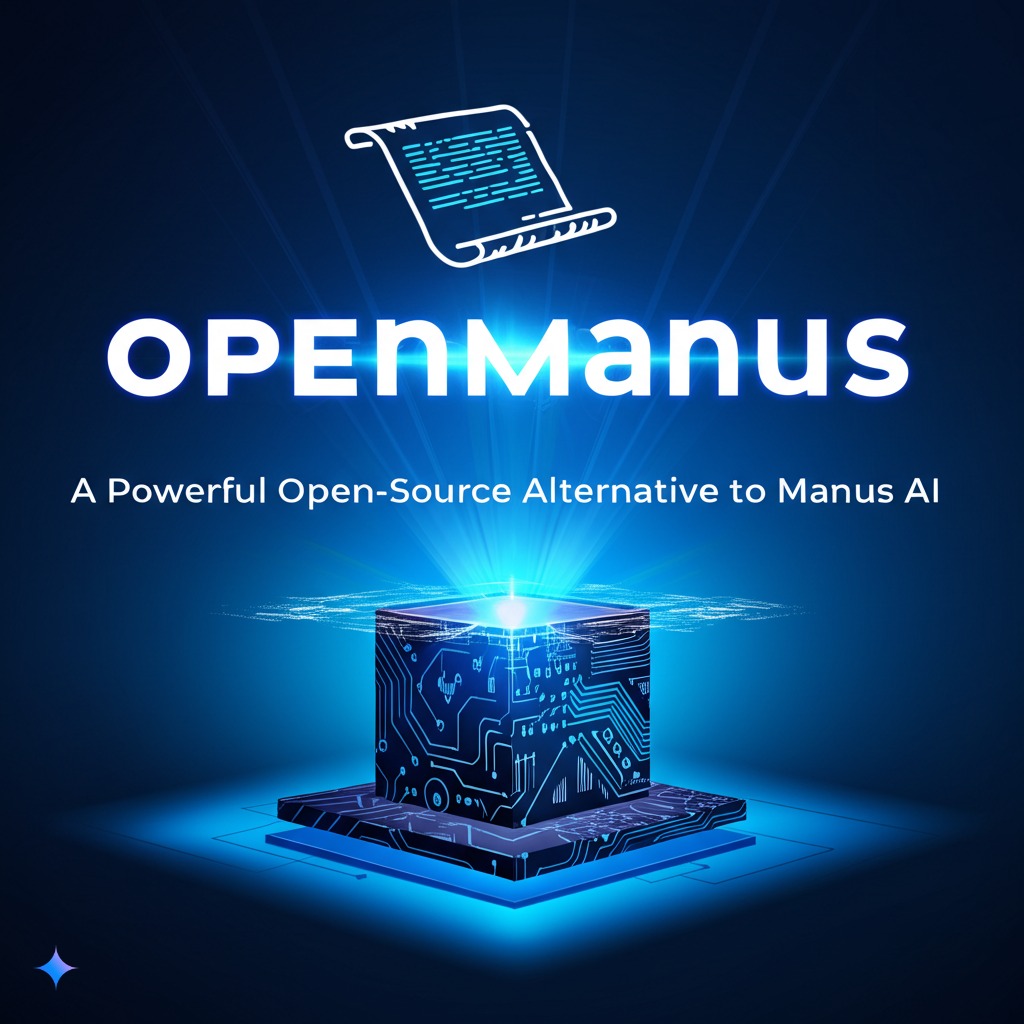The AI landscape is rapidly evolving, with new tools and platforms emerging to meet the growing demand for intelligent automation. Among these, Manus AI garnered significant attention for its ability to handle complex tasks autonomously. However, its invite-only access has created a barrier for many potential users. OpenManus emerges as a powerful open-source alternative, offering similar capabilities with the added benefits of flexibility, customization, and community-driven development.
Table of Contents
What is OpenManus?
OpenManus is an open-source AI agent platform inspired by Manus AI, developed by the MetaGPT community. It aims to provide accessible AI tools to a broader audience, eliminating the need for exclusive codes or expensive subscriptions. Built using large language models (LLMs) like GPT-4o, OpenManus empowers developers to create AI agents capable of executing tasks based on user instructions. Its modular design ensures adaptability to various purposes without being restricted to predefined functions.

Key Features of OpenManus
- Open-Source Flexibility: OpenManus offers direct control over AI tools, allowing developers to modify and extend the software to fit specific project needs. This level of customization is often limited in closed platforms.
- API-First Design: Seamless integration with other tools and services is a core feature of OpenManus. This enables developers to incorporate AI capabilities into existing workflows effortlessly.
- Cost-Effectiveness: OpenManus is free to use, eliminating licensing fees or subscriptions. Users only pay for their own API usage, making it an attractive option for startups, students, and individual developers.
- Community Support: An active community of contributors and users supports OpenManus, fostering collaboration and continuous improvement. This ensures access to cutting-edge tools and a wealth of knowledge.
How OpenManus Works
OpenManus utilizes a modular design to process user requests, plan execution, and deliver results. The system leverages LLMs like GPT-4o to create AI agents that can carry out tasks based on instructions. Key components include:
- Input Processing: Analyzes user requests to understand the desired outcome.
- Planning: Determines the necessary steps to achieve the goal.
- Execution: Utilizes appropriate tools and APIs to perform each step.
- Output Delivery: Presents results in a clear and understandable format.
Getting Started with OpenManus
Setting up OpenManus involves a few straightforward steps. Two primary installation methods are available:
Method 1: Using Conda
- Create a Conda environment:
conda create -n open_manus python=3.12 - Activate the environment:
conda activate open_manus - Clone the repository:
git clone https://github.com/mannaandpoem/OpenManus.git - Navigate to the directory:
cd OpenManus - Install dependencies:
pip install -r requirements.txt
Method 2: Using uv (Recommended)
- Install uv:
curl -LsSf https://astral.sh/uv/install.sh | sh - Clone the repository:
git clone https://github.com/mannaandpoem/OpenManus.git - Navigate to the directory:
cd OpenManus - Create a virtual environment:
uv venv - Activate the environment:
- Unix/macOS:
source .venv/bin/activate - Windows:
.venv\Scripts\activate
- Unix/macOS:
- Install dependencies:
uv pip install -r requirements.txt
The uv method is recommended for faster installation and better dependency management.
Real-World Uses for OpenManus
OpenManus can be applied to a wide range of tasks, including:
- Detailed trip planning
- Stock analysis with visual dashboards
- Creation of educational materials
- Insurance policy comparison with recommendation tables
- Online store sales data analysis
- Identification of potential B2B customers
One user shared an experience of building a research assistant for a healthcare client that analyzes clinical trial data, extracts key information from PDF studies, compares results, and generates comprehensive reports with visual data comparisons. The entire solution was built in just 7 hours.
OpenManus vs. Manus AI
| Feature | OpenManus | Manus AI |
|---|---|---|
| Cost | Free, open-source | Paid subscriptions |
| Customization | Fully customizable codebase | Limited to vendor-provided features |
| APIs | Built for seamless integration | API access often requires premium plans |
| Community | Active open-source contributors | Vendor-controlled updates |
| Target Audience | Developers and tinkerers | Enterprise users |
| Accessibility | Freely available to anyone with basic skills | Requires an invite code and waitlist |
OpenManus shines for those who value flexibility and ownership over their tools. It allows modification of the code, eliminates licensing fees, and provides transparent development. While Manus AI offers a polished out-of-the-box experience, OpenManus provides an accessible and customizable alternative for AI development.
The Future of OpenManus
The OpenManus team has plans for future improvements, including:
- Live demos for instant user trials
- Enhanced task planning for advanced automation
- Improved integrations with AI models
- A web-based version to simplify setup
With its open-source nature and active community, OpenManus is poised to become a leading platform for AI development, empowering users to build innovative and customized AI solutions.
What is OpenManus?
OpenManus is an open-source AI agent platform developed by the MetaGPT community as an accessible alternative to Manus AI. It enables developers to build customizable AI agents using large language models (LLMs) like GPT-4o, empowering users to execute tasks autonomously without requiring invite codes or paid subscriptions.
How does OpenManus work?
OpenManus uses a modular workflow:
Input Processing: Analyzes user requests to determine the goal.
Planning: Breaks down the task into actionable steps.
Execution: Leverages tools/APIs to complete each step.
Output Delivery: Returns results in a clear format.
Why choose OpenManus over closed platforms?
OpenManus offers transparency, customization, and cost savings. Unlike closed platforms, you own the code, avoid licensing fees, and benefit from community-driven innovation.